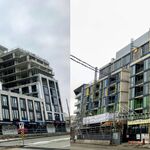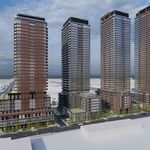jallan71
New Member
I'm sure there must be a thread about this already, but I hunted and couldn't find one... So here's a fresh one: mods, please move if/as necessary.
At any rate, the city is currently re-paving sidewalks at Yonge/Carlton and they have FINALLY moved to a new form of sidewalk grate for the new trees. See below for pics. (Btw, these may be the same as the grates/coverings that were installed on Richmond earlier this year.)
I don't recall there being trees on this stretch of Yonge before (east side, directly north of Carlton) so this is definitely a good thing just in terms of new plantings - but this also seems to be a new/improved kind of grate for trees, which would be a VERY good thing if it's a new standard that's been adopted by the city. I know that many have complained in the past about the concrete tree-coverings that have served more to stifle and strangle the trees more than to protect them. This new grate looks like it will serve to protect while also letting the trees soak up more water.
So, does anybody know if this is a new standard for the city? Should we expect to see more of these? And if so, is it just for new plantings or will the city actually start replacing some of the concrete-slab grates as well?


At any rate, the city is currently re-paving sidewalks at Yonge/Carlton and they have FINALLY moved to a new form of sidewalk grate for the new trees. See below for pics. (Btw, these may be the same as the grates/coverings that were installed on Richmond earlier this year.)
I don't recall there being trees on this stretch of Yonge before (east side, directly north of Carlton) so this is definitely a good thing just in terms of new plantings - but this also seems to be a new/improved kind of grate for trees, which would be a VERY good thing if it's a new standard that's been adopted by the city. I know that many have complained in the past about the concrete tree-coverings that have served more to stifle and strangle the trees more than to protect them. This new grate looks like it will serve to protect while also letting the trees soak up more water.
So, does anybody know if this is a new standard for the city? Should we expect to see more of these? And if so, is it just for new plantings or will the city actually start replacing some of the concrete-slab grates as well?








